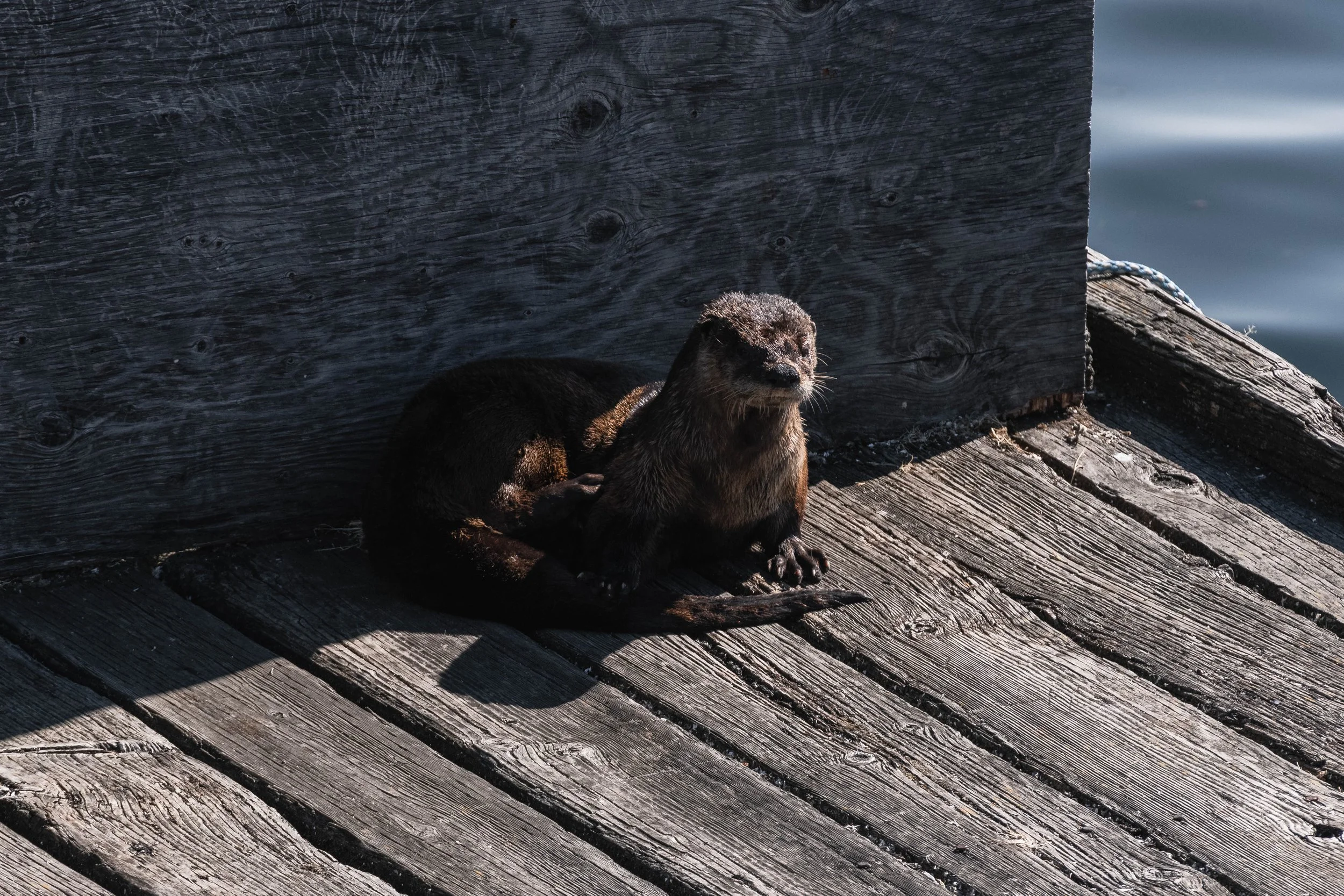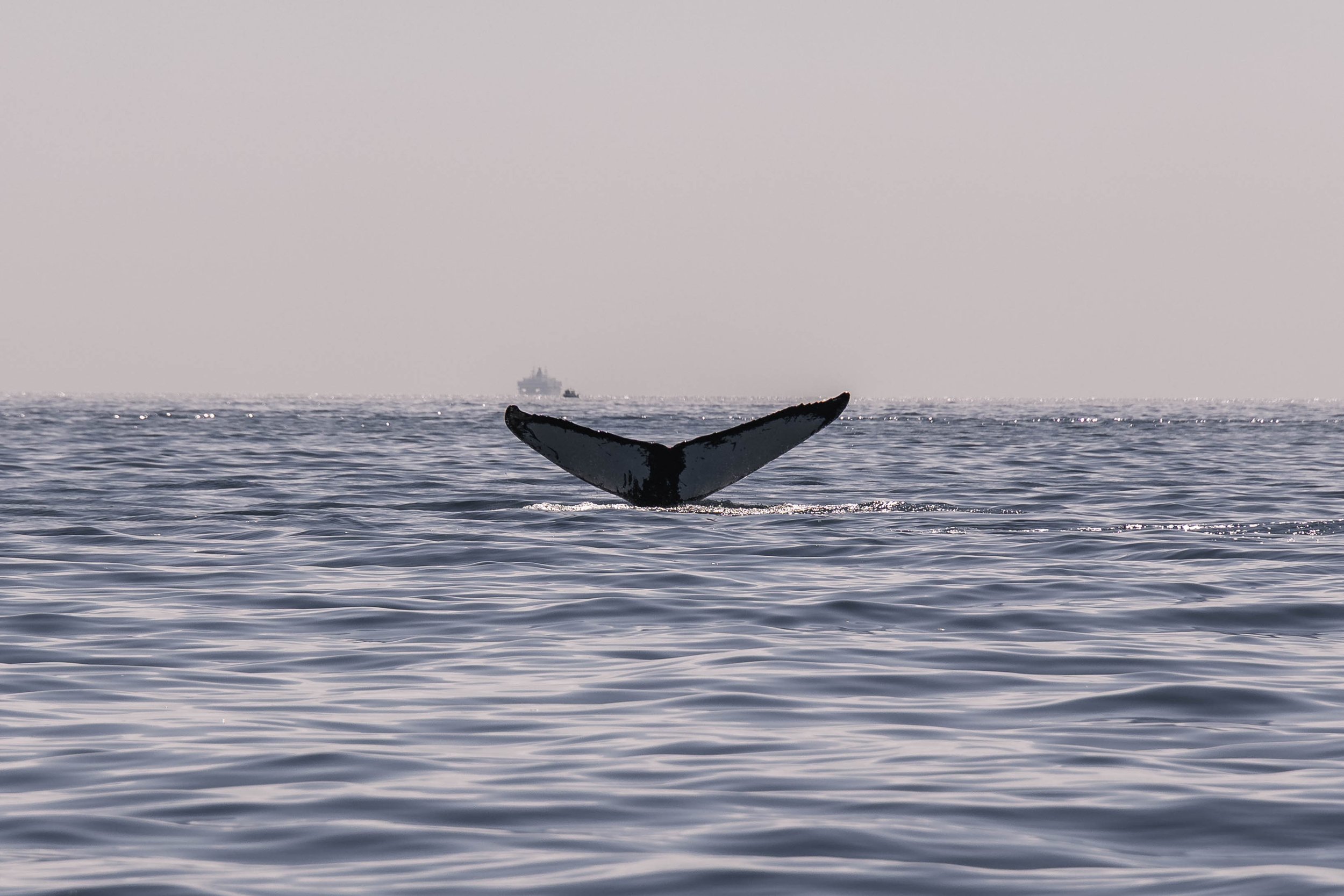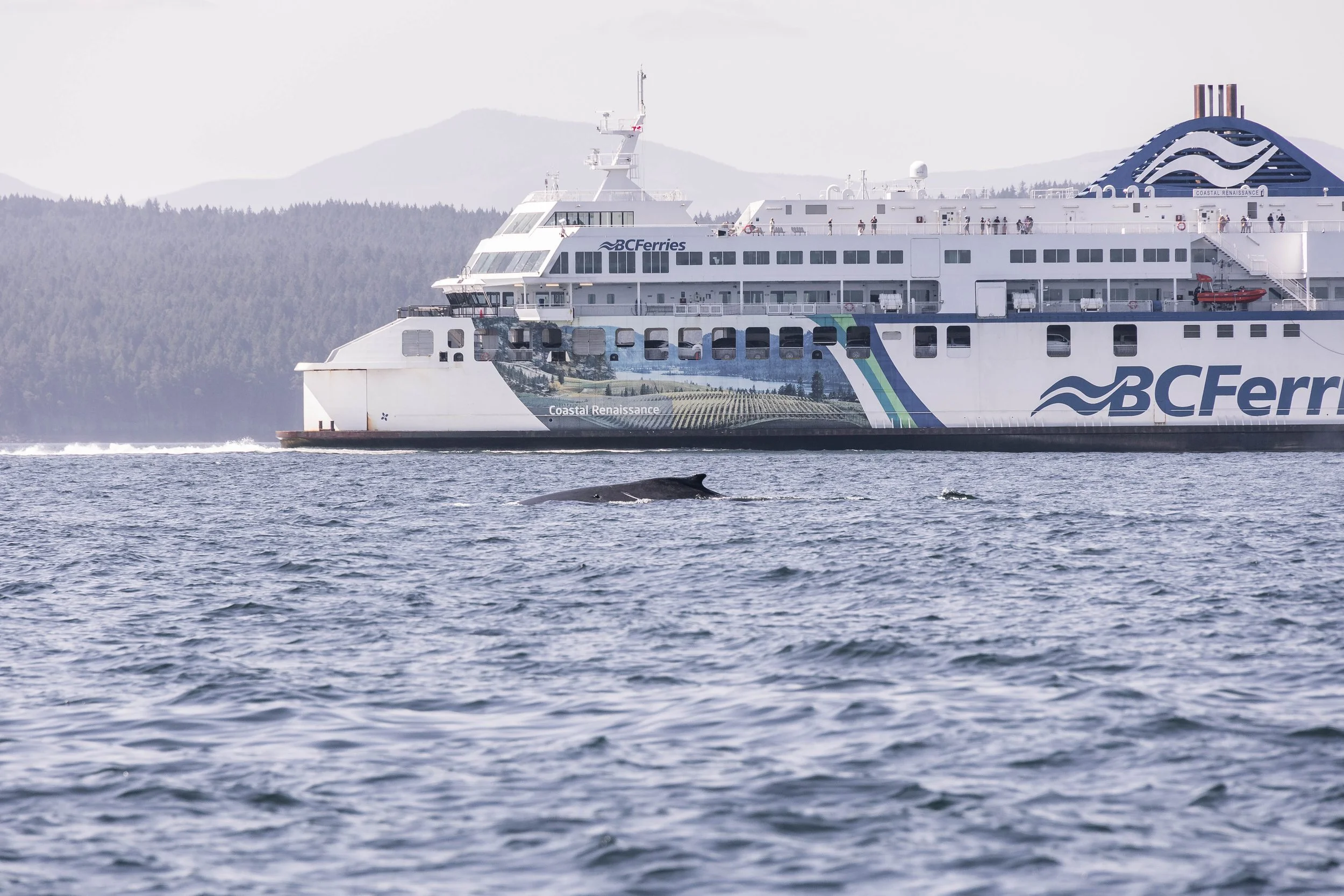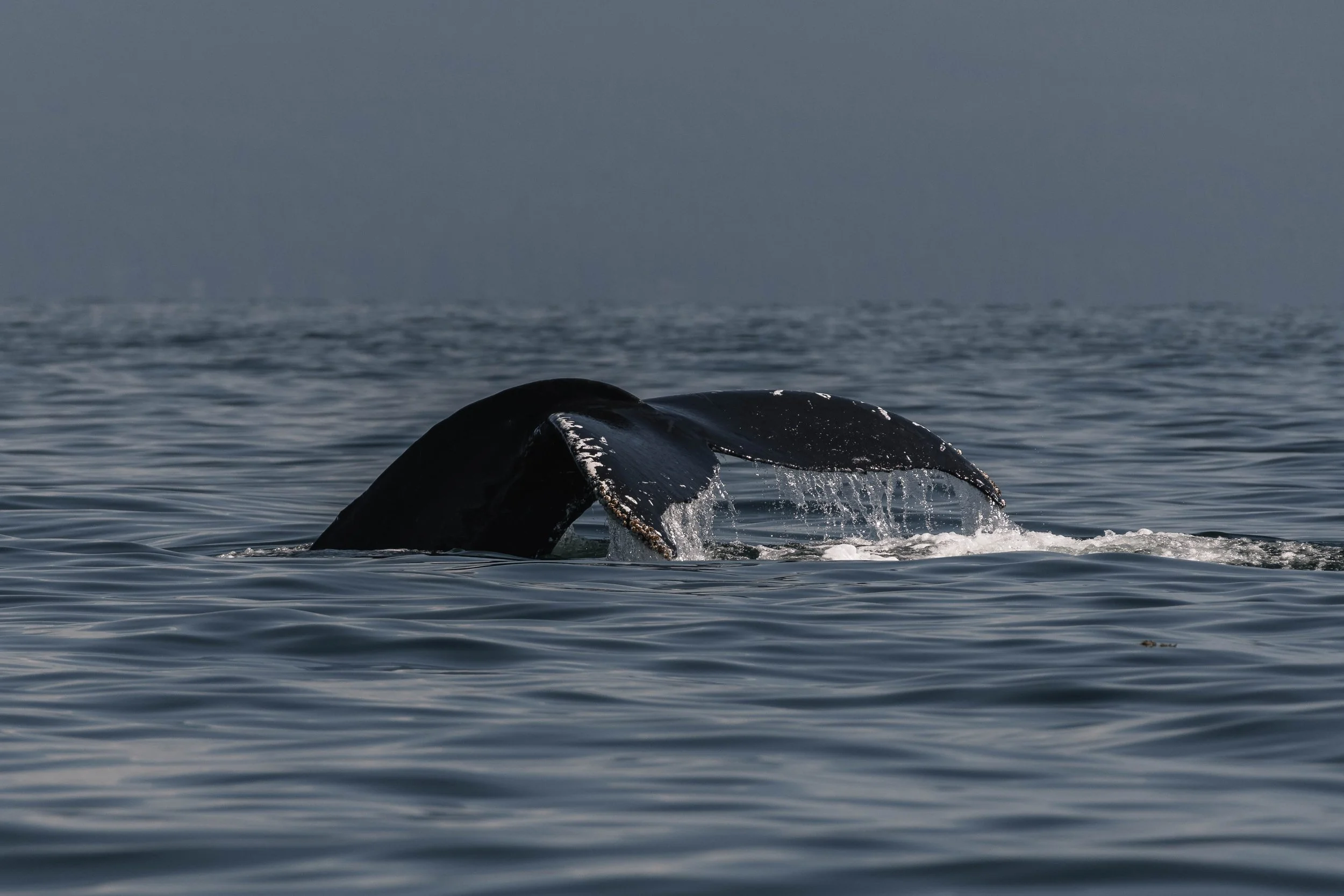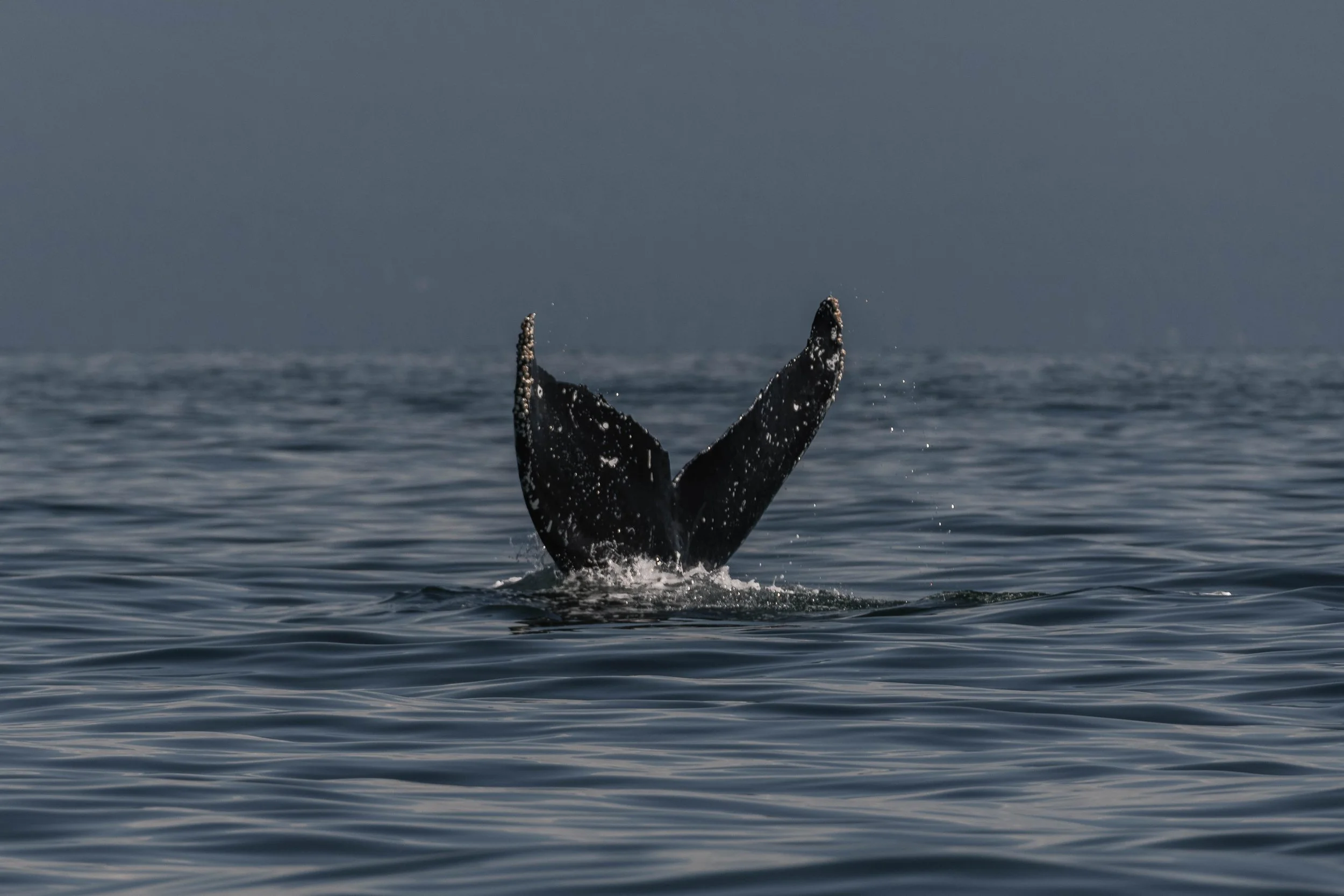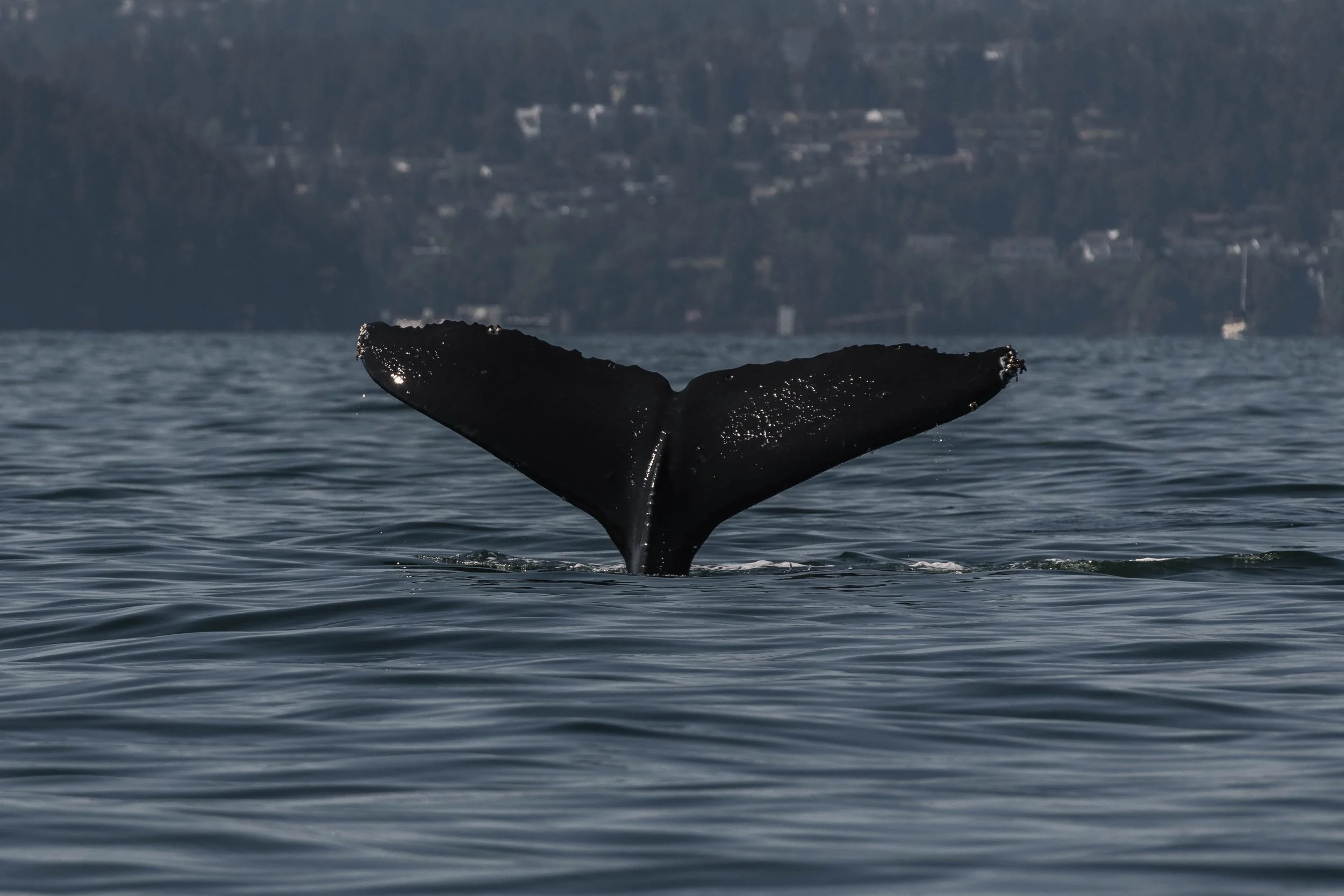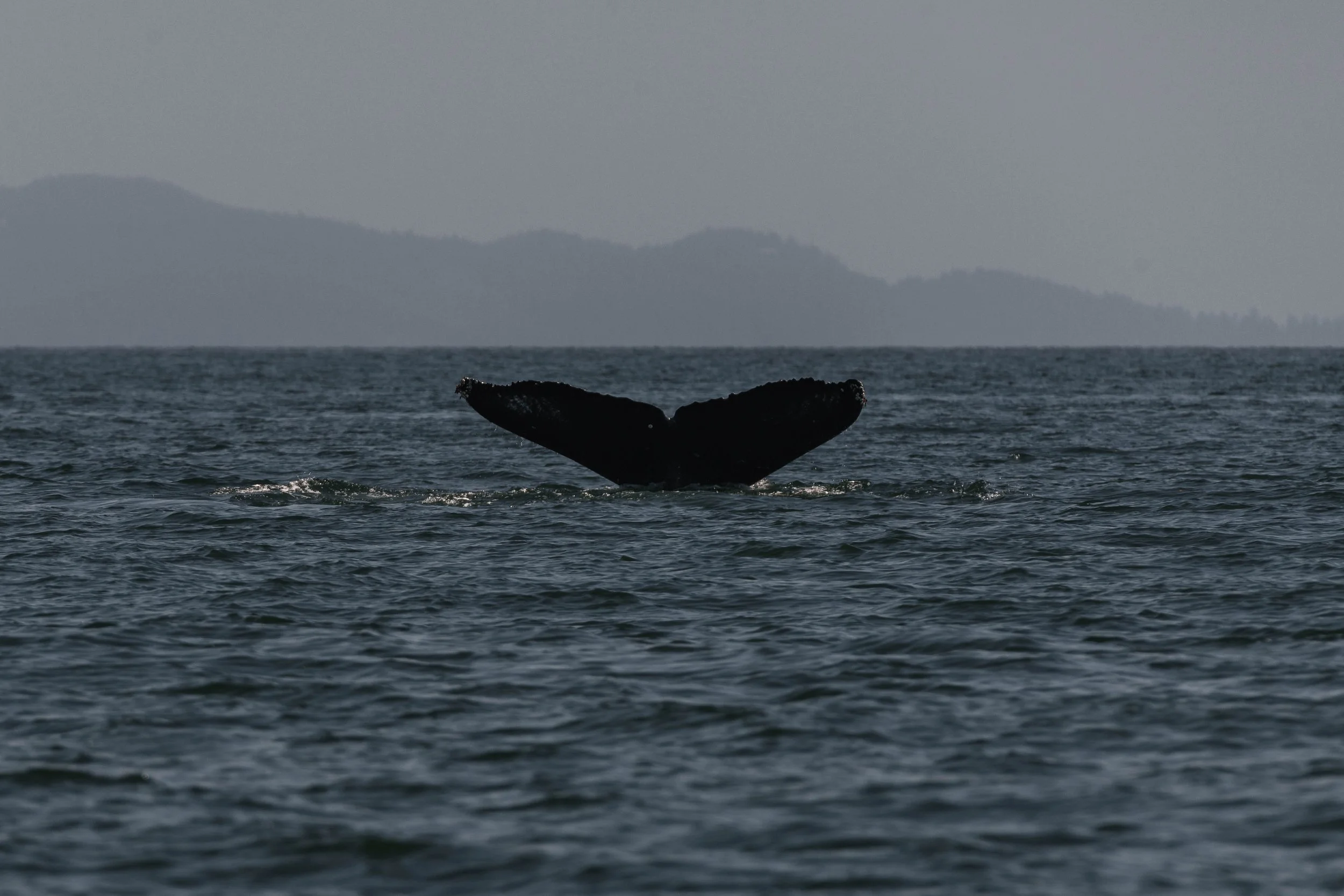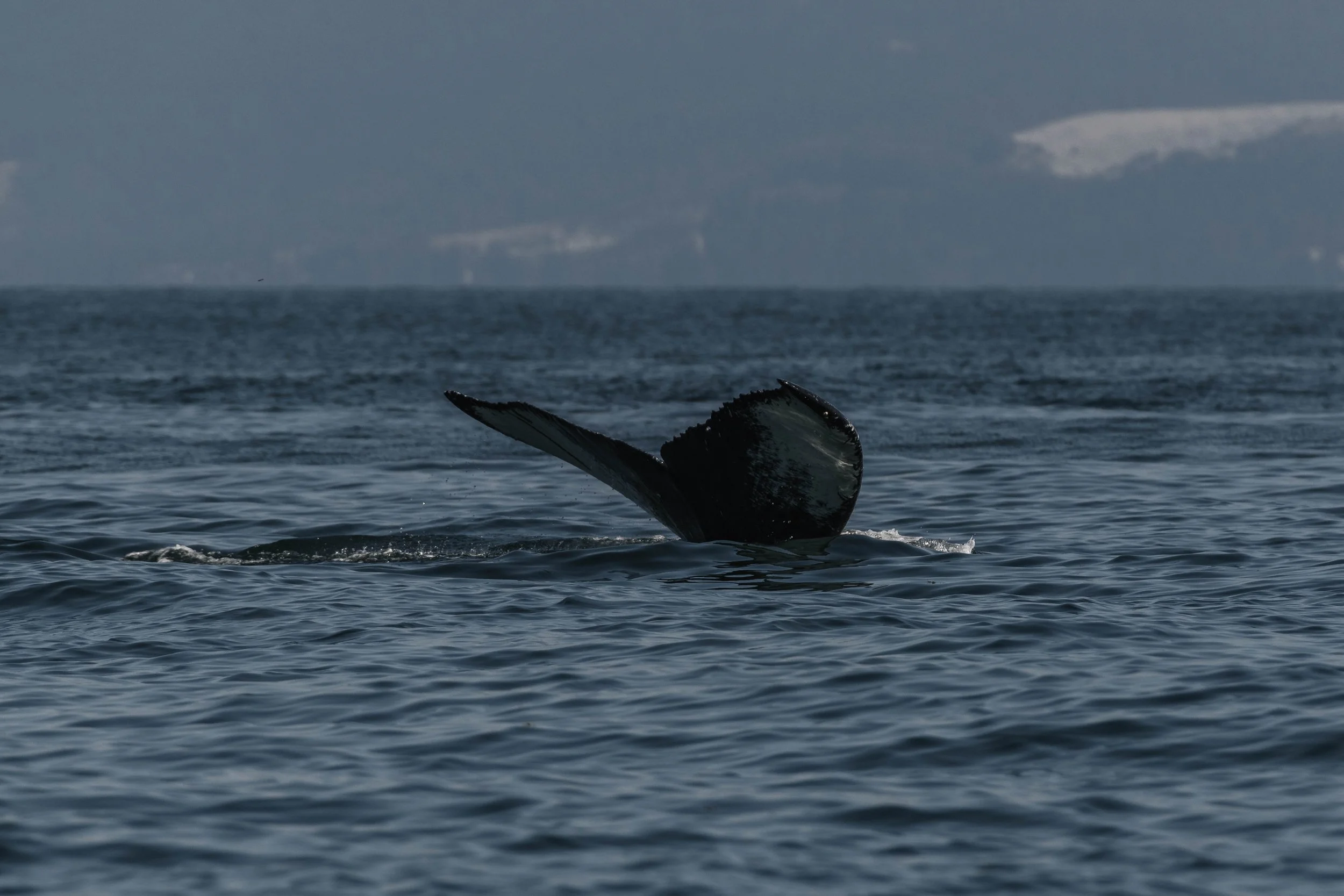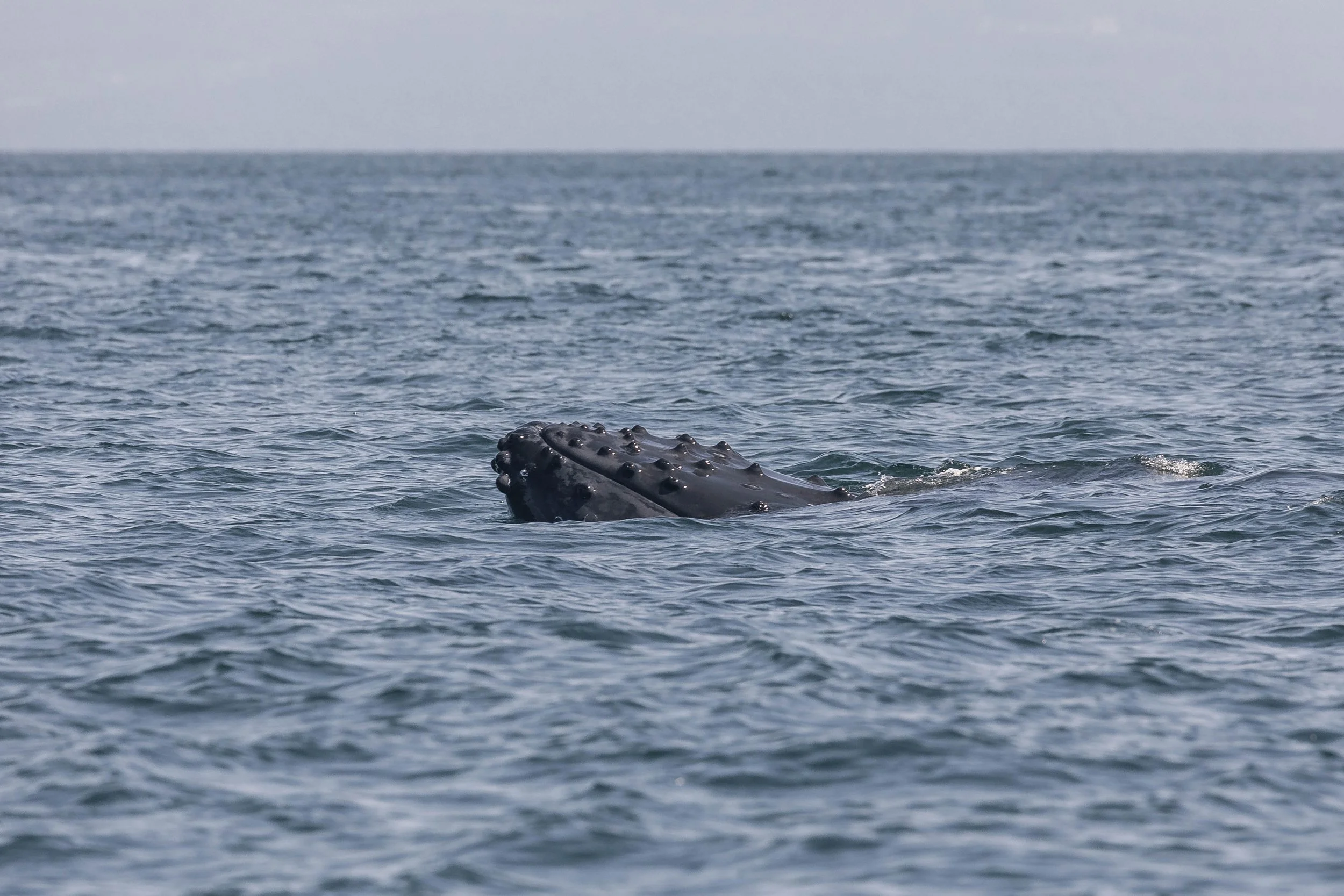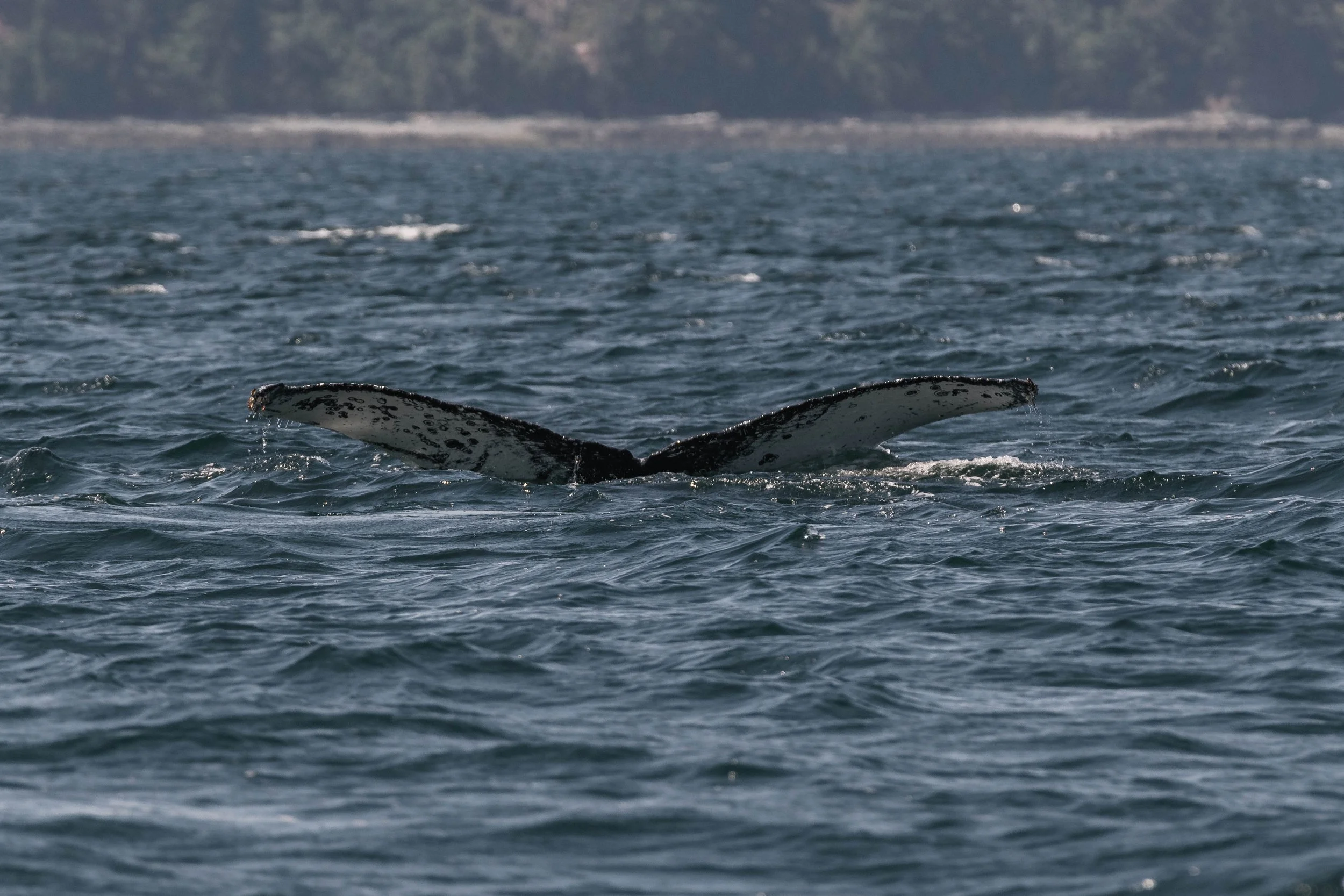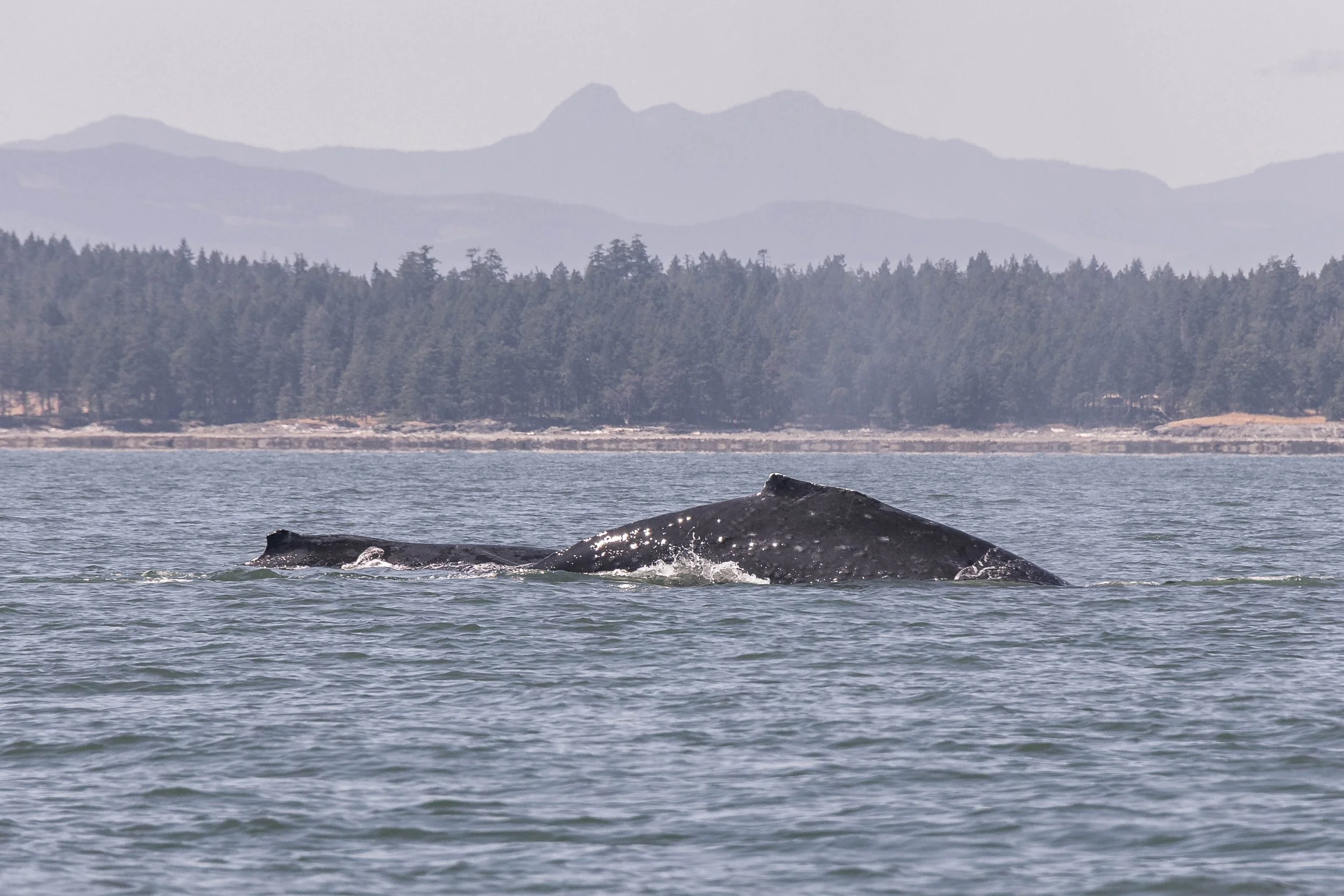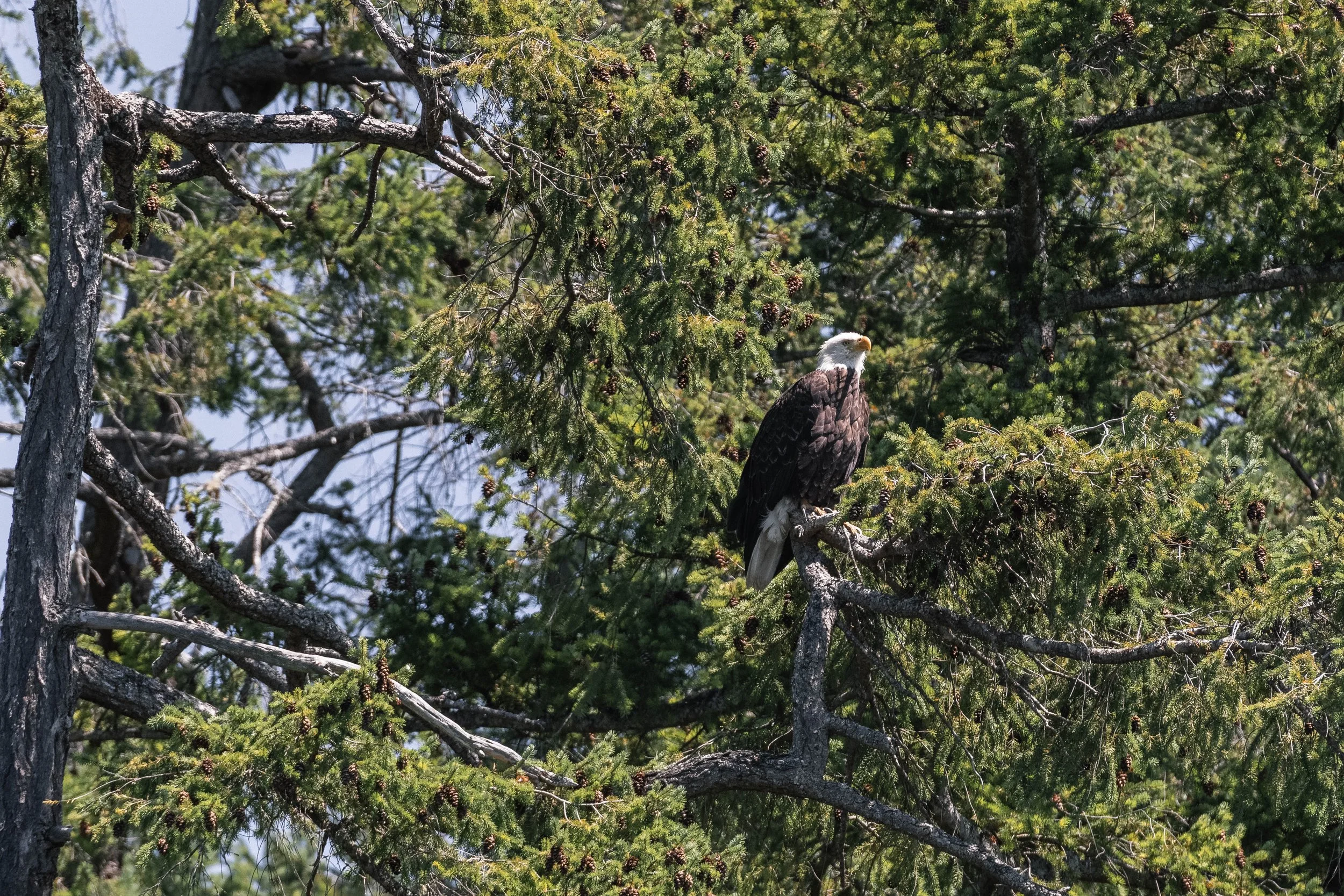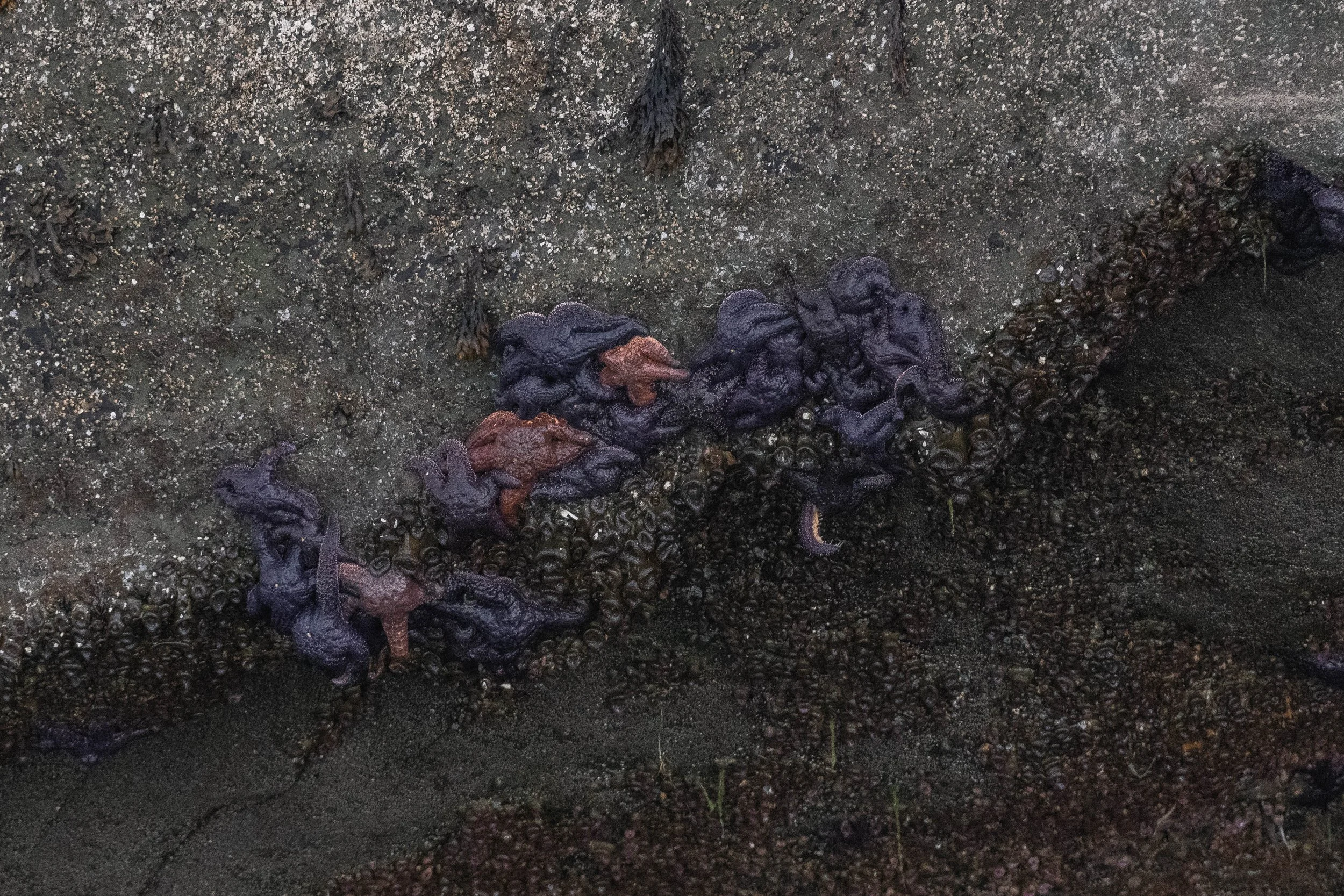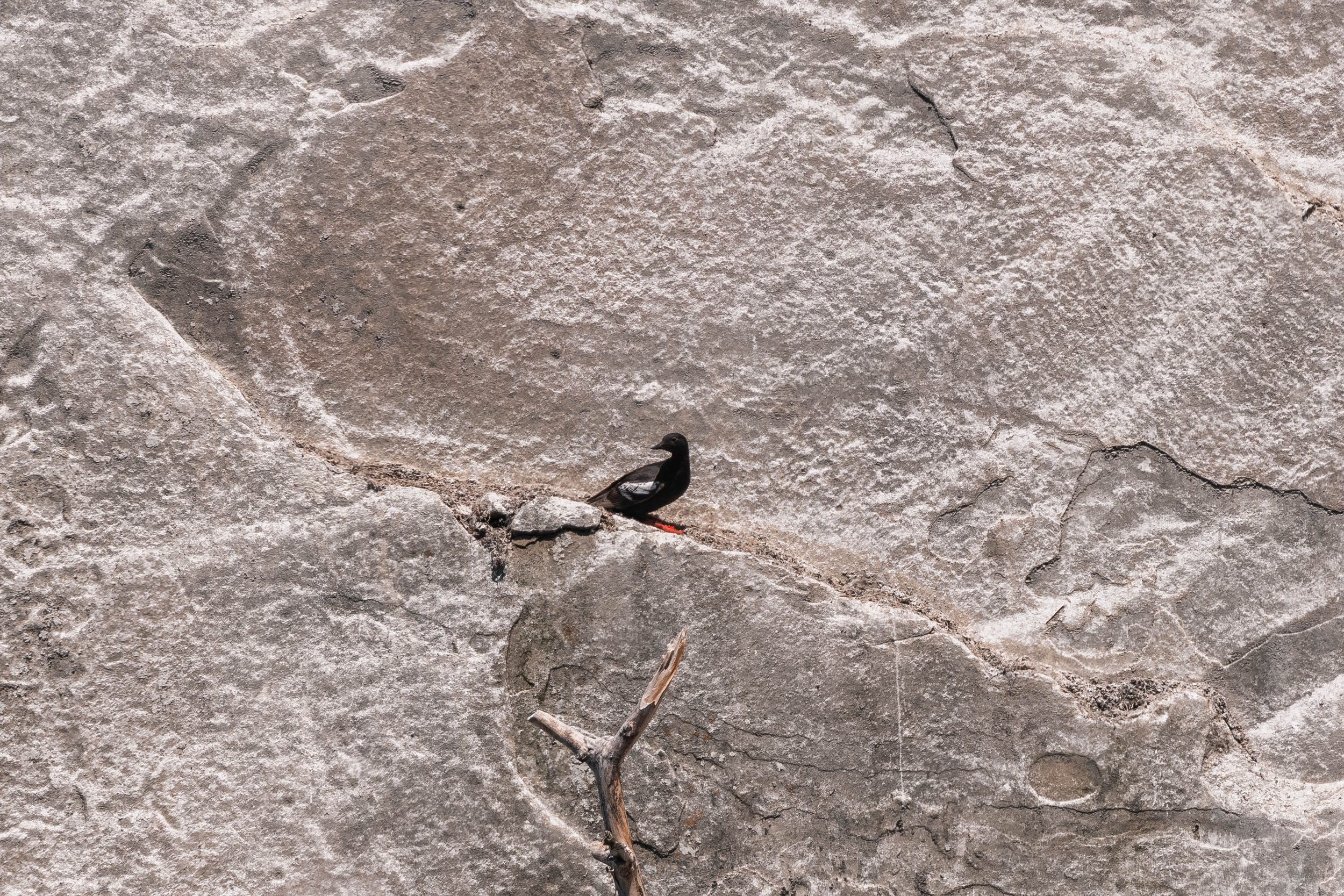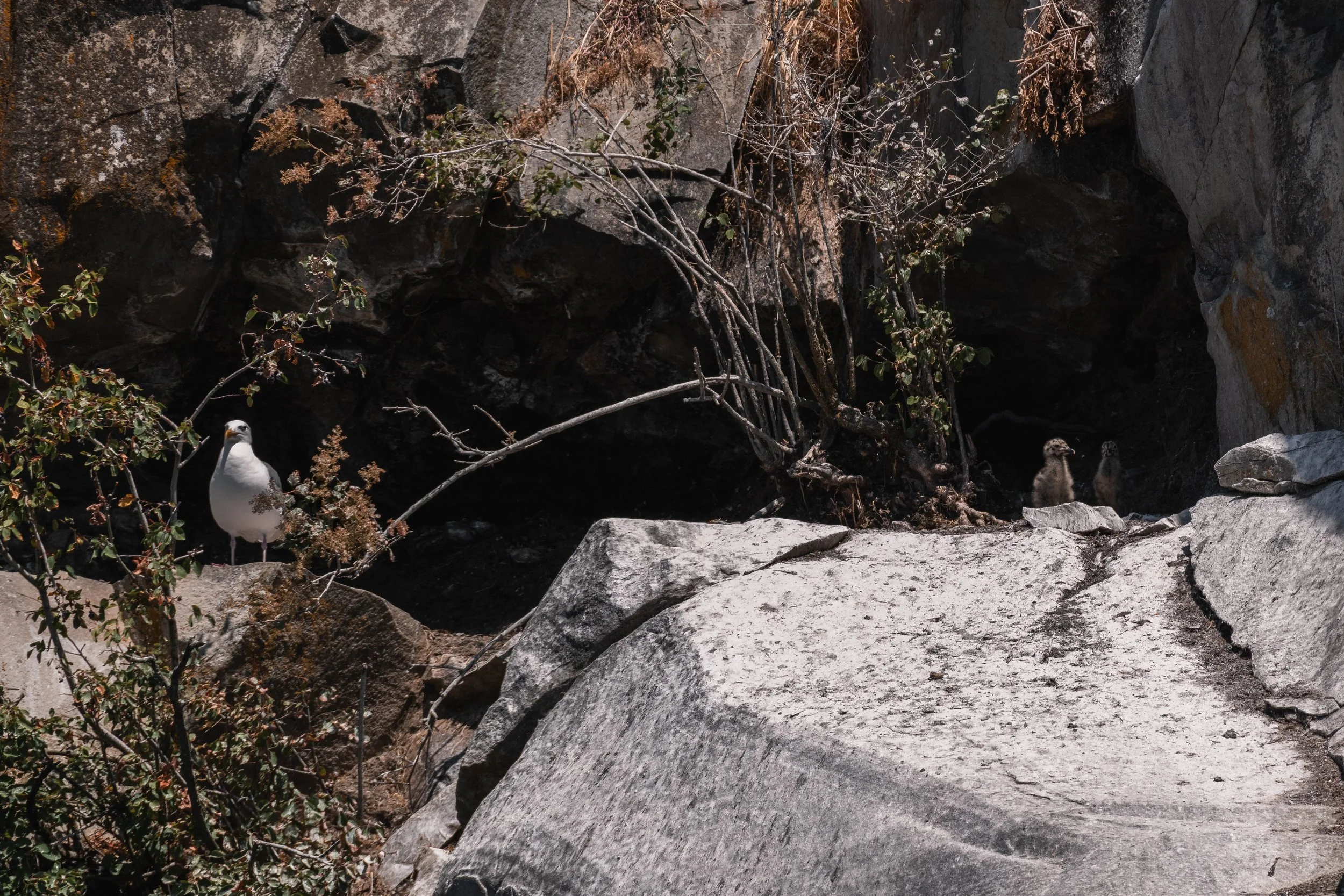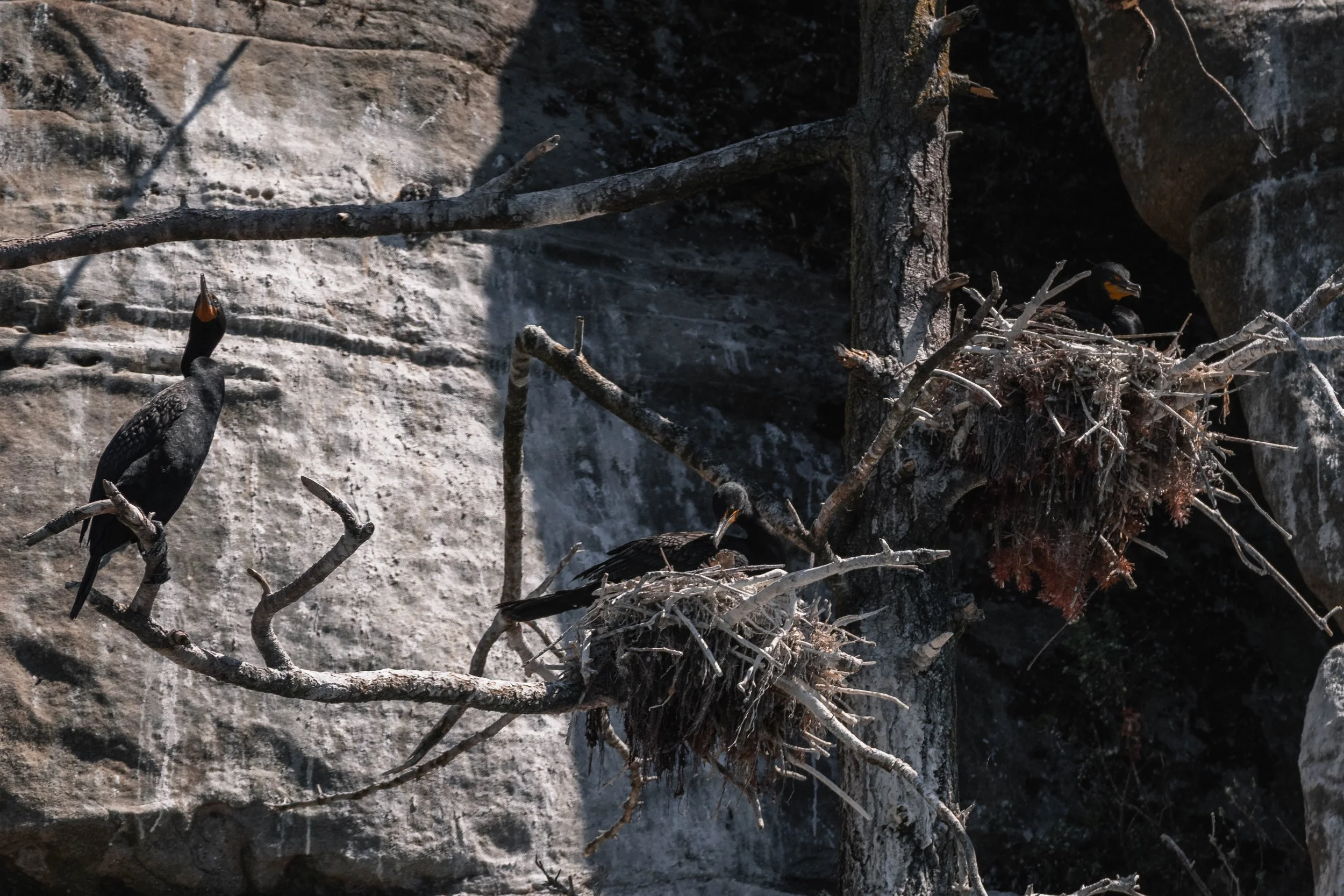July 24, 2025, 10:30 AM - A Double Scoop of Humpback Soup
There are some days on the Salish Sea that feel more like a dream than reality, and our July 24th morning tour was exactly that. With nine individual humpback whales spotted across solo sightings, travelling trios, and one graceful pair, this was a day that not only filled us with awe but also gave us a deeper appreciation for the social lives of these gentle giants.
Our first sighting of the day was Anvil (BCZ0410), a known individual cruising steadily on her own. For many years, this kind of sighting would have been precisely what scientists expected, as for much of the 20th century, humpback whales were primarily considered solitary animals. This belief was likely influenced by the dramatic decline in their global population following the peak of commercial whaling. With fewer individuals in the ocean, and often just one whale spotted at a time, early observations reinforced the idea that humpbacks preferred to travel alone. However, as populations have rebounded in recent decades, observations like the ones we made today are challenging that view and revealing a much more social species than we ever imagined.
While our open vessel Keta was travelling with Anvil, our other two vessels, Cascadia and Kula, had located a trio of humpbacks of their own… followed by a second trio of humpbacks shortly after the first set!
First up: Hammer (BCY1222), Hendrix (BCY1278), and Strike (BCX1675) - a synchronized, steady-moving group that seemed to breathe and dive in perfect unison. About 40 minutes later, we were treated to another three-whale formation: Bagheera (BCY1471), Split Fin (BCZ0298), and Galaxia (BCZ0573) were travelling and fluking together a short way away from the original trio. Watching these whales rise and fall with the waters, seemingly coordinated and at ease with one another, was an absolute highlight.
These groupings aren’t just a coincidence. While humpbacks don’t live in permanent pods like orcas, we now know that many form temporary associations - sometimes lasting just a few hours, other times stretching over weeks or months. Some whales are even seen returning to the same companions year after year, suggesting lasting social bonds!
Seeing two trios in one day is a beautiful reminder that these whales are more than just migratory feeders; they’re social beings with preferences, patterns, and perhaps even friendships.
Just when we thought the day couldn’t possibly deliver more, Bullet (BCX1658) and Fader (BCY0195) were spotted close to Porlier Pass, bringing our total humpback count to nine for the day! Travelling side-by-side, this pair was tightly coordinated, their surfacings near mirror images of one another, flukes raising high into the sky as they dove. After a bit of diving, these two did a bit of pec slapping at the surface of the water, seemingly very excited!
Pairs like Bullet and Fader may form for a variety of reasons: cooperative feeding, companionship, or even just a shared sense of direction in the vast ocean. Whether long-term companions or a short-term match-up, their rhythm suggested familiarity and served as a graceful final chapter to our whale-filled day.
Today’s sightings weren’t just about numbers (although nine humpbacks in one tour is definitely worth celebrating!). They were about perspective - about seeing these massive creatures not just as ocean wanderers, but as social, interactive animals navigating complex lives below the surface, in ways still completely unknown to us.
Once we left our whales behind, we headed over to spot some pinnipeds. Our Steller Sea Lions were busy sunning themselves up on the rocks, and the Harbour Seals were galumphing along, with many mothers with pups in tow. The final stop was over to the Gabriola Bluffs, where our Cormorants nest. There were also a couple of cute baby Gulls nestled into the rocks today, as well as a Bald Eagle keeping an eye on everything from the trees above us.
Please enjoy these photos taken by Marine Naturalists Aly Kohlman, Cheyenne Brewster and Hayleigh Hilbert!
A River Otter spotted before we pushed off the dock. Photo by Aly Kohlman.
Anvil’s dorsal fin. Photo by Cheyenne Brewster.
The underside of Anvil’s tail. Photo by Cheyenne Brewster.
A good look at Anvil’s flukes. Photo by Cheyenne Brewster.
Anvil beside the BC Ferry. Photo by Cheyenne Brewster.
Strike’s dorsal fin. Photo by Aly Kohlman.
The top of Strike’s tail. Photo by Aly Kohlman.
The unique markings on the underside of Strike’s tail. Photo by Aly Kohlman.
The top of Hendrix’s tail as they head down for a dive. Photo by Aly Kohlman.
Hendrix’s dorsal fin. Photo by Aly Kohlman.
Hendrix’s unique tail. Photo by Aly Kohlman.
Hammer’s dorsal fin. Photo by Aly Kohlman.
Hammer heading down for a dive. Photo by Aly Kohlman.
The top side of Hammer’s tail. Photo by Aly Kohlman.
The two dark lines on Hammer’s left fluke makes them easy to identify. Photo by Aly Kohlman.
A nice, high fluke from Bagheera. Photo by Hayleigh Hilbert.
Galaxia has a lot of white on their tail. Photo by Hayleigh Hilbert.
Split Fin’s tail. Photo by Hayleigh Hilbert.
Bagheera’s dorsal fin with Split Fin just behind. Photo by Hayleigh Hilbert.
Split Fin’s dorsal fin. Do you see how he got his name? Photo by Hayleigh Hilbert.
A sideways tail from Split Fin. Photo by Hayleigh Hilbert.
The top of Galaxia’s tail has lots of barnacle scarring. Photo by Hayleigh Hilbert.
The rostrum of one of our trio lifted out of the water. Those big bumps are called tubercles. Photo by Hayleigh Hilbert.
The blowholes of one whale with the rostrum of another sticking out of the water beside them. Photo by Aly Kohlman.
Bagheera closely followed by another. Photo by Aly Kohlman.
A peek at Galaxia’s tail. Photo by Aly Kohlman.
Bullet and Fader side by side. Photo by Cheyenne Brewster.
Bullet’s dorsal fin with a peek of Fader’s rostrum beside. Photo by Hayleigh Hilbert.
A fluke waterfall from Fader. Photo by Hayleigh Hilbert.
Fader’s tail. Photo by Hayleigh Hilbert.
Bullet with her own fluke waterfall. Photo by Hayleigh Hilbert.
Bullet’s tail. Photo by Hayleigh Hilbert.
We can identify Bullet by the notch towards the tip of her right fluke. Photo by Hayleigh Hilbert.
A pectoral fin in the air. Photo by Hayleigh Hilbert.
Preparing for a pec slap. Photo by Hayleigh Hilbert.
This gull found themself a snack. Photo by Hayleigh Hilbert.
It looks like quite the mouthful! Photo by Hayleigh Hilbert.
A wave from a Steller Sea Lion. Photo by Hayleigh Hilbert.
Look at those teeth! Photo by Hayleigh Hilbert.
A tiny Harbour Seal pup amongst the Steller Sea Lions. Not the ideal place for a seal pup to be! Photo by Aly Kohlman.
So tiny! Photo by Aly Kohlman.
A Harbour Seal pup where they should be, beside mom. Photo by Aly Kohlman.
A small blep. Photo by Aly Kohlman.
A Bald Eagle looking at us, looking at them. Photo by Aly Kohlman.
So majestic. Photo by Aly Kohlman.
Ochre Sea Stars. Photo by Aly Kohlman.
A Pigeon Guillemot at the Gabriola Bluffs. Photo by Aly Kohlman.
Do you see both the adult and baby gulls in this picture? Photo by Aly Kohlman.
A close up of the fuzzy gull chicks. Photo by Aly Kohlman.
Cormorants nesting in a tree. Photo by Aly Kohlman.
Cormorants use their own guano as a cement to help secure their nests to the bluffs. Photo by Hayleigh Hilbert.

